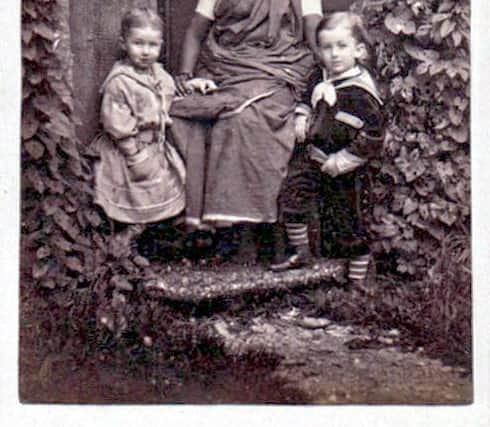Uncovering the hidden histories of the ayahs of Scotland
The boys, John and James, were the sons of photographer James Jameson and his wife Elizabeth, of North Pitt Street, and the woman their children’s ayah – a nanny brought from India for their care.
The boys appear on the 1881 census, aged four and two, but nothing is known of the woman as she is not listed in the records, the photograph serving as the only known trace of her life in Scotland.
Advertisement
Hide AdAdvertisement
Hide AdNow, the hidden histories of ayahs who made long sea voyages to Scotland during the 19th and early 20th century to care for the children of wealthy families are being uncovered.


Edinburgh writer and researcher Shasta Ali, said: “Nobody has documented these women and no one has heard the stories. The really striking part of it all is the lack of personal detail. I really want to shine a light on them.”
Ayahs were routinely employed in colonial homes in India, where significant numbers of Scots worked as tea planters, soldiers and colonial administrators, with the women then looking after the children on the ships that brought them home. They often just appeared in passenger lists as ‘ayah’.
Sometimes ayahs were hired only to make the journey, with newspaper advertisements found by Ms Ali often showing the women’s attempts to return home, with their services often coming to an end on their arrival in Scotland.
Sometimes, the women were simply abandoned, with a 1908 case of an ayah left at King’s Cross station with just £1 by a woman who used her services in Scotland for 15 days.
From Ms Ali’s collection of newspaper ads, it is known that ayahs found themselves across the country, from Isle of Skye to Aberdeen and Carnoustie to Glasgow, Edinburgh and beyond.
One, printed in July 1911, reads: “Lady highly recommends her ayah wishing to return to Rangoon. Excellent children’s nurse and sailor. Apply to Ms R Scott-Elliot, Moat of Troqueer, Dumfries.”
Another trace of an ayah is made in Aberdeen with this newspaper listing: “Experienced ayah, made several sea voyages, anxious to return to Ceylon.”
Advertisement
Hide AdAdvertisement
Hide AdMrs Burgess, from Edinburgh, her child and ayah were among those who died in the wreck of the SS Roumania, a Clyde-built ship, which sunk near Lisbon in October 1892 on its way to India.
Ms Ali, who first published her research with the Scottish BAME Writers Network, became interested in Scottish ayahs after reading of the Ayah Home of London in Hackney which became a safe and familiar place for stranded ayahs and Chinese amahs during the 19th and early 20th century.
Among them was the ayah abandoned at King’s Cross by a Mrs Drummond, from Scotland, who went on to make her way to India. What happened to the ayah is unclear, for now at least.
Ms Ali said: “ I want to nudge these women out from the margins of history. To build a story of presence; of ayahs, South Asian and other migrant women that were present in Scotland, long before it was acknowledged more widely.
“Black and Brown history is British and Scottish history. It’s intertwined, not separate and distinct.”
A message from the Editor:Thank you for reading this article. We're more reliant on your support than ever as the shift in consumer habits brought about by Coronavirus impacts our advertisers.
If you haven't already, please consider supporting our trusted, fact-checked journalism by taking out a digital subscription.
Comments
Want to join the conversation? Please or to comment on this article.
